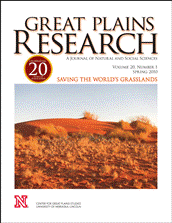Great Plains Studies, Center for

Great Plains Research: A Journal of Natural and Social Sciences (through 2013)
Date of this Version
May 1997
Document Type
Article
Abstract
In the Atlantic region in the seventeenth century, there were several Indian groups, including the Massawomeck, that made a brief appearance in the contemporary documentary records but completely disappeared from the scene thereafter. The Jumanos were a Southwest tribe that faced the same fate. The mysteries surrounding the Jumanos have attracted the attention of such scholars as Adolph Bandelies, Frederick H. Hodge, Herbert Bolton, Carl Sauer, France V. Scholes, and J.Charles Kelley, but by the 1940s the consensus view was established that Jumanos, as used in the Spanish colonial documents, was a general term and did not refer to any specific ethnic group or tribe.
Hickerson's The Jumanos, which is based upon a thorough and systematic analysis of the Spanish colonial records, challenges this interpretation by presenting a coherent picture of the Jumanos as a distinct people. The author maintains that the Jumanos were part of the Tanoan-speaking group that covered a vast area extending east of the Rio Grande into the Southern Plains, and south of New Mexico as far as La Junte de los Rios.


Comments
Published in Great Plains Research 7:1 (Spring 1997). Copyright © 1997 The Center for Great Plains Studies, University of Nebraska–Lincoln. Used by permission. http://www.unl.edu/plains/publications/GPR/gpr.shtml